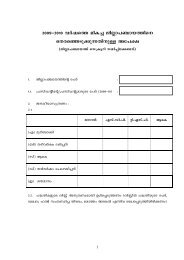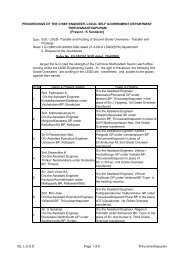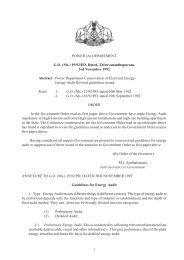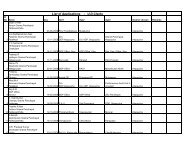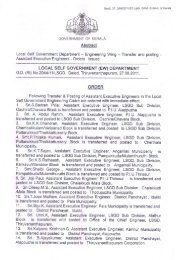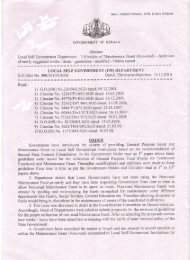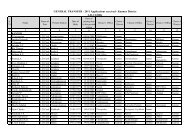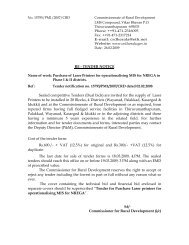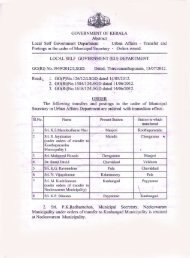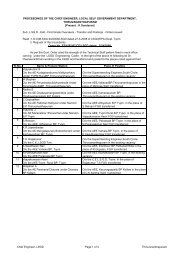Chapter 2 - Kerala Govt Logo
Chapter 2 - Kerala Govt Logo
Chapter 2 - Kerala Govt Logo
- No tags were found...
You also want an ePaper? Increase the reach of your titles
YUMPU automatically turns print PDFs into web optimized ePapers that Google loves.
<strong>Chapter</strong> 2Policy, Legislation and Regulationmay be guaranteed by the Central Government for assisting public health programmes, publichealth services would actually need to be delivered by the State administration, NGOs andother institutions of civil society.With regard to role of LSGIs in Health Sector, thepolicy points out that some States have adopted apolicy of devolving programmes and funds in thehealth sector through different levels of thePanchayati Raj Institutions. Generally, the experiencehas been an encouraging one. The adoption of such anorganizational structure has enabled need-basedallocation of resources and closer supervision throughthe elected representatives. NHP-2002 lays great<strong>Kerala</strong>’s achievements in Pubic healthsector have been remarkable, anddecentralization and involvement ofLocal Self governments in publichealth sector interventions have sofar been largely positive. Thenational policy, as a whole brings inconvergence with the localgovernance and hence influences theESMF.emphasis upon the implementation of public health programmes through local self-governmentinstitutions. The structure of the national disease control programmes will have specificcomponents for implementation through such entities. The Policy urges all State Governmentsto consider decentralizing the implementation of the programmes to such Institutions by 2005.In order to achieve this, financial incentives, over and above the resources normativelyallocated for disease control programmes, will be provided by the Central Government.2.2.1.4. National Agricultural Policy 2003The National Policy on Agriculture seeks to actualize the vast untapped growth potential ofIndian agriculture, strengthen rural infrastructure to support faster agricultural development,promote value addition, accelerate the growth of agro business, create employment in ruralareas, secure a fair standard of living for the farmers and agricultural workers and theirfamilies, discourage migration to urban areas and face the challenges arising out of economicliberalization and globalization. Over the next two decades, it aims to attain:A growth rate in excess of 4 per cent per annum in the agriculture sectorGrowth that is based on efficient use of resources and conserves our soil, water and biodiversity;Growth with equity, i.e., growth which is widespread across regions and farmers;Growth that is demand driven and caters to domestic markets and maximizes benefits fromexports of agricultural products in the face of the challenges arising from economicliberalization and globalization;Growth that is sustainable technologically, environmentally and economically.To attain these, the policy outlines the following focus areas.Sustainable agriculture: The policy aims to promote technically sound, economically viable,environmentally non–degrading and socially acceptable use of country‟s natural resources –land, water and genetic endowments.Food and nutrition security: Special efforts will be made to raise the productivity andproduction of crops to meet the increasing demand for food generated by unabateddemographic pressures and raw materials for expanding agro-based industries. A majorthrust will be given to development of rain-fed and irrigated horticulture, floriculture,




